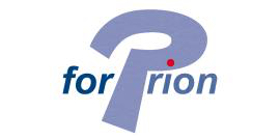FORPRION
BAVARIAN RESEARCH ASSOCIATION PRIONS

LMU 4 Development of BSE-nvCJD-Fast-Assays and Development of therapeutics for the treatment of nvCJD
Goals of this project were the development of a BSE-CJD fast assay and the development of drugs for the treatment of CJD. Both goals focused on the 37 kDa/67 kDa laminin receptor LRP/LR, which we identified as the receptor for the cellular prion protein PrPc and the infectious scrapie prion protein PrP27-30. The level of the 67 kDa LR form of the receptor is increased in the leucocyte fraction of the blood and in the cerebrospinal fluid (CSF) of cattle suffering from BSE. After testing several hundred BSE-samples, we achieved sensitivity and specificity rates for both body fluids of approx. 80%, respectively. This does not meet the EU criteria (100% sensitivity and 100% specificity) required for the admission of a new BSE-test. LRP/LR therefore belongs to the list of surrogate markers such as NSE, S100, 14.3.3 or plasminogen, which all do not meet the requirements for a reliable BSE-CJD test. LRP/LR, however, represents also a promising target for the treatment of prion diseases. We proved that by cell culture experiments which demonstrated that prion propagating cells have been liberated from infectious prions by reducing the LRP/LR levels with the help of (1) siRNA technology, or by blocking the receptor via (2) LRP/LR specific antibodies or (3) defined carbohydrates (polysulfated glycanes). We constructed and microinjected recombinant lentiviral vectors expressing siRNAs into mouse brains to deliver siRNAs long-term into mice (and later into CJD patients). This resulted in a reduction of 67 kDa LR levels in the brain of mice. Infectivity studies with these mice will prove whether the reduction of the LR levels will cure the mice from scrapie. In such a case, we consider clinical studies on CJD patients with recombinant lentiviral vectors. The LRP/LR specific antibody W3 prolonged the survival times in scrapie infected mice 2.3 fold (plus 130%). Polysulfated glycanes such as heparan mimetics (HMs) or pentosan polysulfate (PPS) also prolonged the survival times of scrapie infected mice and - in case of PPS- even cured mice from scrapie. Therefore, we will conduct clinical studies with W3, PPS and HMs to investigate whether these substances may cure CJD patients or might improve their condition. Since W3 originating from rabbits is only available in limited amounts, we generated single chain antibodies (scFvs) directed against the receptor by a phage display approach and recombinant DNA technology. The scFvs were delivered into mice by passive immunization and microinjection of recombinant Adeno-associated-Viruses (AAV) expressing these antibodies. The delivered antibodies significantly reduced peripheral PrPSc propagation in the spleen, but failed to prolong the survival times of scrapie infected mice. Consequently, we improved the affinity of the antibodies to the antigen LRP/LR by the methodology of chain shuffeling. This resulted in scFv iS18 and its full-length version IgG iS18. Both revealed a ten-fold increased affinity to the antigen. We will deliver both antibodies via passive immunotransfer and via injection of recombinant lentiviral vectors into the brain of scrapie infected mice. We will initiate clinical studies with both antibodies in case that these treatments will prolong the survival times. Our study recommends (1) polysulfated glycanes such as PPS and HMs, (2) antibodies directed against LRP/LR and (3) siRNAs directed against LRP mRNA as promising therapeutic tools for the treatment of prion diseases, which at least in part can be applied directly in clinical trials.



